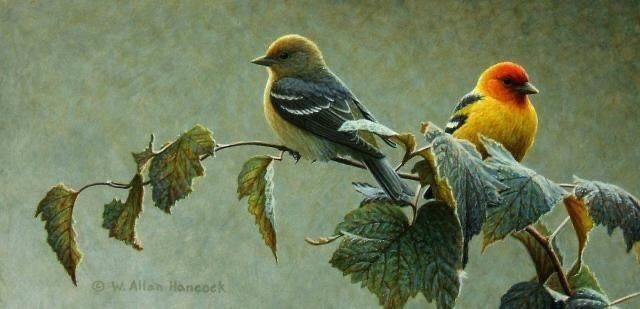Introduction to the Hancock Bird
The Hancock bird is a remarkable species that has captured the interest of birdwatchers, nature enthusiasts, and researchers alike. Named after the renowned ornithologist, John Hancock, this bird is a testament to the wonders of the avian world. Known for its distinctive features, intriguing behavior, and unique habitat, the Hancock bird has become a subject of much fascination. In this article, we will dive deep into the world of the Hancock bird, exploring its physical characteristics, habitat, behavior, and the importance of conserving this remarkable species.
What is the Hancock Bird?
The Hancock bird often referred to as a rare and elusive species, belongs to the Passeriformes order, which includes the majority of the world’s songbirds. While there are many species with similar traits, the Hancock bird stands out due to its striking plumage and distinctive calls. The bird is typically recognized for its vibrant feathers, which can vary in color depending on the region it inhabits.
Despite being relatively less known compared to more common birds, the Hancock bird has gained attention due to its unique behavioral patterns and adaptations that allow it to thrive in specific ecosystems. Its ability to survive in both tropical and temperate climates further highlights its resilience and adaptability.
Physical Characteristics of the Hancock Bird
One of the first things that people notice about the Hancock bird is its beautiful and vibrant plumage. Males are typically more colorful, with vivid hues of red, blue, or green that stand out against the backdrop of their natural surroundings. The females, on the other hand, tend to have more muted tones, designed for camouflage while nesting.
The Hancock bird has a medium-sized body, measuring approximately 25 to 30 cm in length. It boasts a strong beak suited for foraging, and its wings are long and pointed, allowing it to fly efficiently over long distances. Its tail is also quite prominent, with a long and graceful shape that aids in stability during flight.
Habitat and Distribution of the Hancock Bird
The Hancock bird is native to a wide range of ecosystems, from tropical rainforests to temperate woodlands. It thrives in areas with dense vegetation, as these habitats provide both shelter and abundant food sources. Some of the most well-known regions where the Hancock bird can be found include parts of Southeast Asia, Central America, and Africa.
The bird is particularly attracted to areas near water sources, such as rivers, lakes, and wetlands. These environments offer a steady supply of food, including insects, seeds, and berries. The Hancock bird’s adaptability to various environments has allowed it to establish a presence in both urban and rural landscapes, although it prefers more secluded and undisturbed areas for nesting.
The Behavior of the Hancock Bird
The Hancock bird is known for its social and territorial nature. It often forms flocks during the non-breeding season, which can range in size from a few individuals to large groups. These flocks typically engage in synchronized flight patterns and foraging, a behavior that helps the birds find food more efficiently and protect one another from predators.
During the breeding season, the Hancock bird becomes more solitary or pairs off with a mate. Mating rituals are elaborate, with males performing intricate dances and songs to attract females. These displays are essential for mate selection, as females choose their partners based on the quality of these performances. Once a pair is formed, they work together to build a nest in the dense foliage of trees or shrubs, where the female lays a clutch of eggs.
Conservation Status of the Hancock Bird
While the Hancock bird is not currently classified as endangered, its population faces several threats due to habitat loss and environmental changes. Deforestation, urbanization, and agricultural expansion have led to a reduction in suitable habitats, which puts pressure on the bird’s population.
Conservation efforts are underway in many regions to protect the Hancock bird and its natural habitats. These efforts include establishing protected areas, promoting sustainable land use practices, and increasing awareness about the importance of preserving biodiversity.
The Hancock bird is also a valuable indicator species. Its presence or absence in a given area can provide insight into the health of the ecosystem. Therefore, conserving the Hancock bird goes hand in hand with protecting the broader environment.
The Importance of Studying the Hancock Bird
Studying the Hancock bird provides valuable insights into the behavior and adaptation of species in diverse ecosystems. Researchers and ornithologists use this bird as a model for understanding migration patterns, mating behaviors, and ecological interactions within different habitats.
Furthermore, the Hancock bird’s role in pollination and seed dispersal makes it a critical part of its ecosystem. By consuming a variety of seeds and fruits, it helps maintain plant diversity, which in turn supports other wildlife in the area. Understanding the Hancock bird’s behavior and ecological contributions is essential for maintaining a balanced and healthy environment.
Fun Facts About the Hancock Bird
- The Hancock bird is known for its melodic song, which varies between individuals and regions. The sound is often described as a mix of whistles, clicks, and trills.
- Male Hancock birds are highly territorial, and their songs serve to warn off rivals and attract mates. These songs can be heard from a distance of up to 1 km in open habitats.
- During migration, the Hancock bird is capable of flying long distances. It often travels in large flocks, which provide safety in numbers.
- The Hancock bird has an impressive memory and can remember the locations of food sources and nesting sites year after year.
The Role of Birdwatchers in Protecting the Hancock Bird
Birdwatching has become one of the most popular hobbies worldwide, and many birdwatchers have developed a deep appreciation for the Hancock bird. These enthusiasts play a crucial role in conservation efforts by helping to monitor populations, raise awareness, and promote the importance of preserving natural habitats.
In many countries, birdwatching tours and programs are designed to educate the public about the Hancock bird and other local species. These programs also contribute to eco-tourism, which provides economic incentives for local communities to protect wildlife and natural spaces.
How You Can Help Protect the Hancock Bird
If you are passionate about the conservation of the Hancock bird, there are several ways you can contribute to its protection:
- Support Conservation Organizations: Donate to organizations that are dedicated to protecting endangered birds and their habitats.
- Adopt Sustainable Practices: Reduce your environmental impact by supporting sustainable farming, reducing waste, and conserving water.
- Participate in Citizen Science Projects: Join birdwatching groups and citizen science programs that monitor bird populations and contribute valuable data to researchers.
- Raise Awareness: Spread the word about the importance of bird conservation and encourage others to take part in protecting the Hancock bird.
Conclusion: The Hancock Bird’s Legacy
The Hancock bird is more than just a beautiful creature; it is a vital part of the ecosystems it inhabits. Its striking appearance, fascinating behaviors, and essential role in the environment make it a species worth protecting. By learning more about the Hancock bird and taking action to conserve its habitat, we can ensure that future generations will have the privilege of experiencing this remarkable bird in the wild.
Through continued research, conservation efforts, and public education, we can help safeguard the Hancock bird and the rich biodiversity it represents. As we work together to protect this species, we are also preserving the delicate balance of nature that sustains life on Earth.


